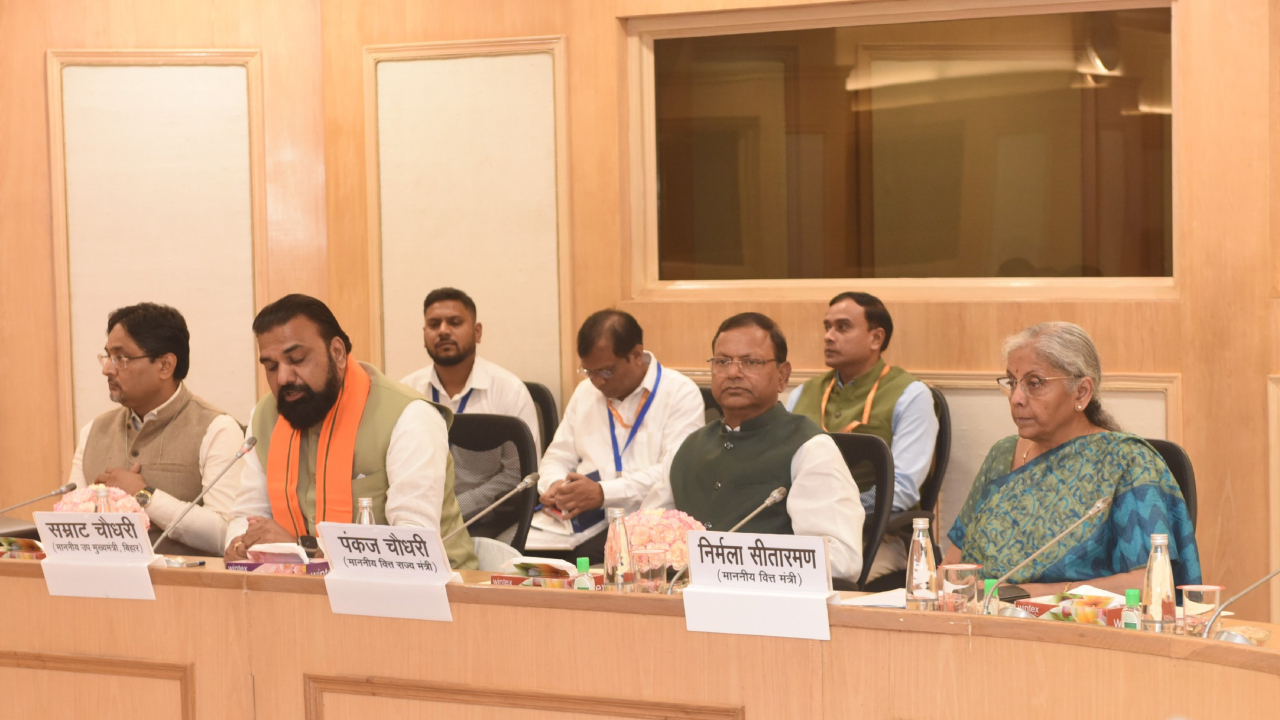An SBI Research report suggests that implementing these proposals could lead to an annual revenue loss of approximately ₹85,000 crore.
Published Aug 21, 2025 | 4:27 PM ⚊ Updated Aug 21, 2025 | 4:27 PM

Finance Minister Nirmala Sitharaman convened meeting with GoMs over GST reforms on Thursday, 21 August. Credit: x.com/FinMinIndia
Synopsis: Once approved by the GoMs, the Centre’s proposals will be presented to the GST Council, which includes ministers from the Centre and all states, at its meeting next month.
On Wednesday, 21 August, Finance Minister Nirmala Sitharaman convened a meeting with Groups of Ministers (GoMs) from various states and shared the Centre’s proposals for comprehensive reforms to the Goods and Services Tax (GST) system, focusing on reducing tax rates and simplifying compliance requirements for businesses.
The GoMs, tasked with examining rate rationalisation, insurance taxation, and compensation cess, will discuss the Centre’s ‘next-generation’ GST reforms over two days.
These reforms propose tax rates of 5% and 18%, with a special 40% rate suggested for 5-7 items, including “sin goods”, according to a PTI report.
Currently, GST is applied at rates of 5%, 12%, 18%, and 28%. Essential items, such as food, are either exempt or taxed at 5%, while luxury and demerit goods fall under the 28% slab, with an additional cess.
Sitharaman’s 20-minute address to the GoMs highlighted the need for GST reforms, according to a reports. She elaborated on the Centre’s plans and their importance to the states.
Union Minister for Finance and Corporate Affairs Smt. @nsitharaman today addressed the Group of Ministers (GoMs) constituted by the GST Council on Compensation Cess, Health & Life Insurance, and Rate Rationalisation at Vigyan Bhawan, New Delhi. Union Minister of State for… pic.twitter.com/hMRFOCwXBF
— Ministry of Finance (@FinMinIndia) August 20, 2025
The GoM on compensation cess was established to determine the future of the cess after the loan repayment period ends. The GoM on insurance is exploring reductions in tax rates on health and life insurance premiums.
Meanwhile, the GoM on rate rationalisation is tasked with proposing changes to tax slabs and rates, as well as addressing duty inversion issues in certain sectors. This group is set to meet again on 21 August.
An SBI Research report suggests that implementing these proposals could lead to an annual revenue loss of approximately ₹85,000 crore. For the current financial year, the revenue shortfall is projected at ₹45,000 crore, assuming the new rates take effect from 1 October.
Once approved by the GoMs, the Centre’s proposals will be presented to the GST Council, which includes ministers from the Centre and all states, at its meeting next month. Prime Minister Narendra Modi has announced that the GST reforms will be implemented by Diwali.
According to the SBI Research report, the effective weighted average GST rate has decreased from 14.4% at its inception to 11.6% in September 2019. With the proposed rate rationalisation, this could further decline to 9.5%.
Congress leader and Telangana Deputy Chief Minister Bhatti Vikramarka Mallu, who was present at the GoM meet, welcomed the Finance Ministry move but was cautious of its implementation.
He said, “while introducing GST, the states were growing 14 percent. To cover losses, if any, GST compensation was introduced for a period of 5 years to stabilise the growth rate of 14 percent. However, the 14 percent growth rate has not stabilised and at present, the states remain at an annual growth of around 8 to 9 percent only.”
Attended the GST Council’s GoM meeting in New Delhi chaired by Hon’ble Union Finance Minister Smt. @nsitharaman Ji.
Welcomed the proposal to exempt Life and Health Insurance from GST, which will enhance insurance penetration.
Also welcomed the removal of the 12% slab and… pic.twitter.com/IQxcdKkeBQ— Bhatti Vikramarka Mallu (@Bhatti_Mallu) August 20, 2025
“The proposal of rate rationalisation and reduction of tax burden is always welcome. However, at the same time, it must be balanced by ensuring that the revenues of the states are protected. Otherwise, the welfare schemes meant for poor people and middle class and infrastructure projects will suffer,” Mallu added.
(Edited by Amit Vasudev)
